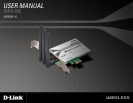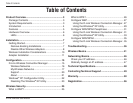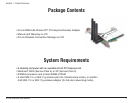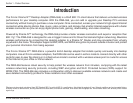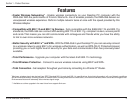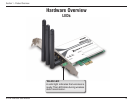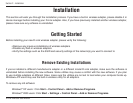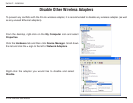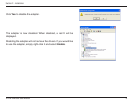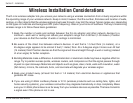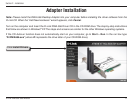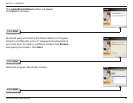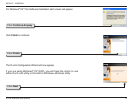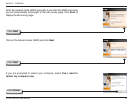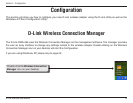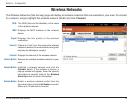
4D-Link DWA-556 User Manual
Section 1 - Product Overview
Introduction
The D-Link Xtreme N™ Desktop Adapter (DWA-556) is a Draft 802.11n client device that delivers unrivaled wireless
performance for your desktop computer. With the DWA-556, you can add or upgrade your Desktop PC’s wireless
connectivity without having to purchase a new computer. Once connected, access your network’s high-speed Internet
connection while sharing photos, files, music, video, printers, and storage. Get a better Internet experience with a faster
wireless connection so you can enjoy digital phone calls, gaming, downloading, and video streaming.
Powered by Xtreme N™ technology, the DWA-556 provides a faster wireless connection and superior reception than
802.11g*. The DWA-556 is designed for use in bigger homes and for those that demand higher networking. Maximize
wireless performance by connecting this desktop adapter to a Xtreme N
™
Router and stay connected from virtually
anywhere in the home. This adapter supports WEP, WPA, and WPA2 encryption to prevent outside intrusion and protect
your personal information from being exposed.
The D-Link Xtreme N™ DWA-556 is a powerful 64-bit desktop adapter that installs quickly and easily into desktop
computers. Like all D-Link wireless adapters, the DWA-556 can be used in ad-hoc mode to connect directly with other
cards for peer-to-peer file sharing or in infrastructure mode to connect with a wireless access point or router for access
to the Internet in your office or home network.
The DWA-556 features robust security to help protect the wireless network from intruders, complying with the latest
wireless networking security protocols, including WEP encryption and Wi-Fi Protected Access (WPA) support for
WPA2-PSK. The DWA-556 also includes a configuration utility to discover available wireless networks and create and
save detailed connectivity profiles for those networks most often accessed.
•
Maximum wireless signal rate derived from IEEE Standard 802.11g and draft 802.11n specifications. Actual data throughput will vary. Network conditions and environmental factors,
including volume of network traffic, building materials and construction, and network overhead, lower actual data throughput rate. Environmental factors will adversely affect wireless
signal range.



